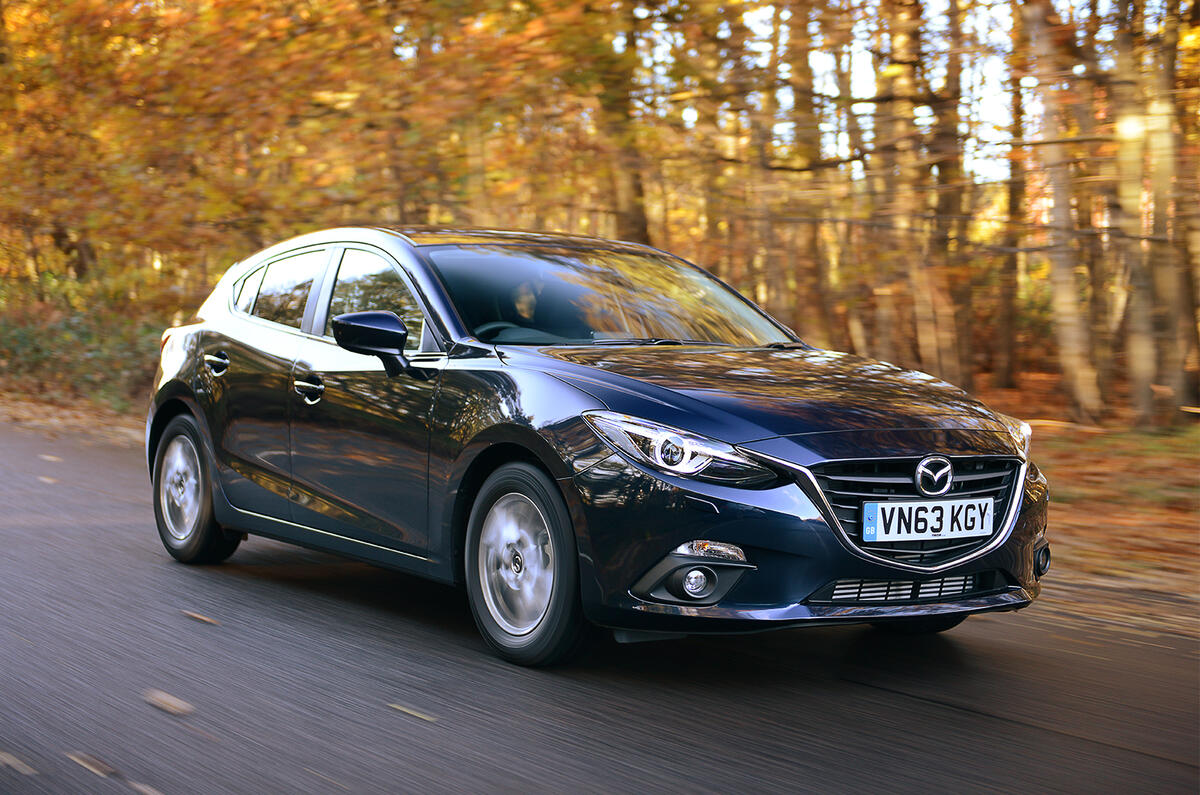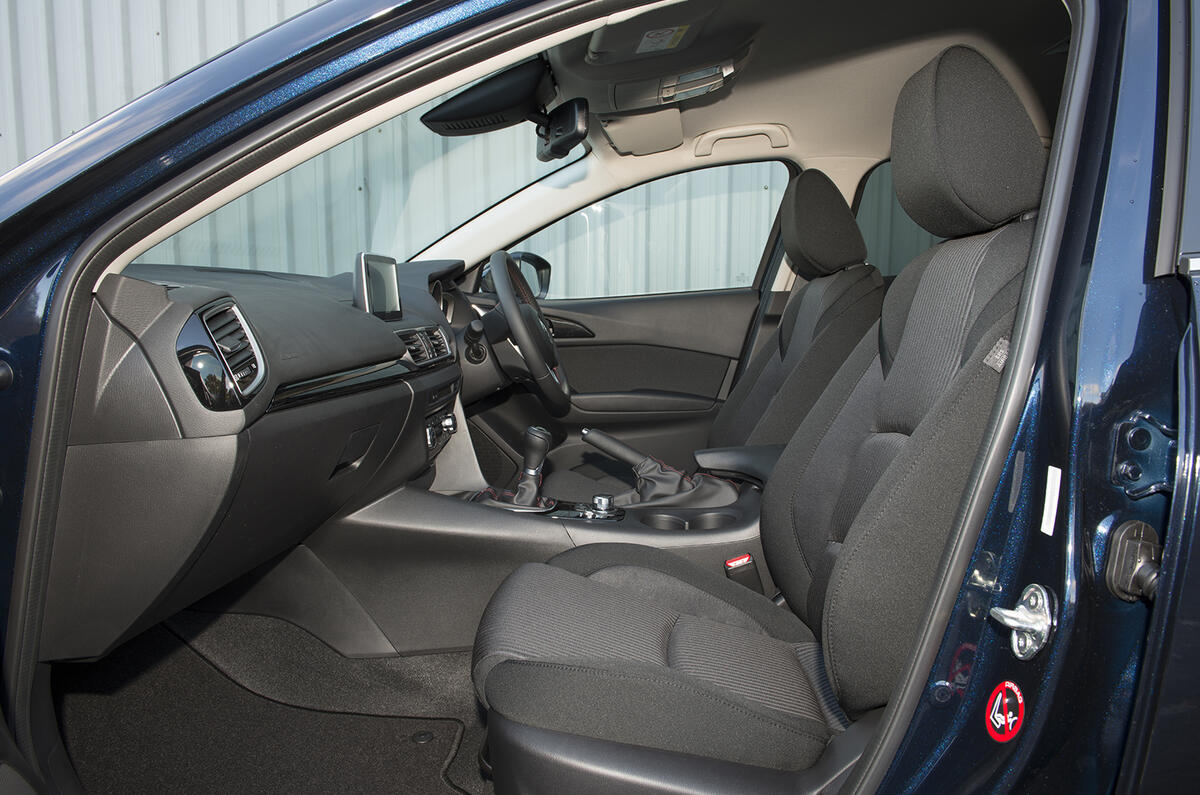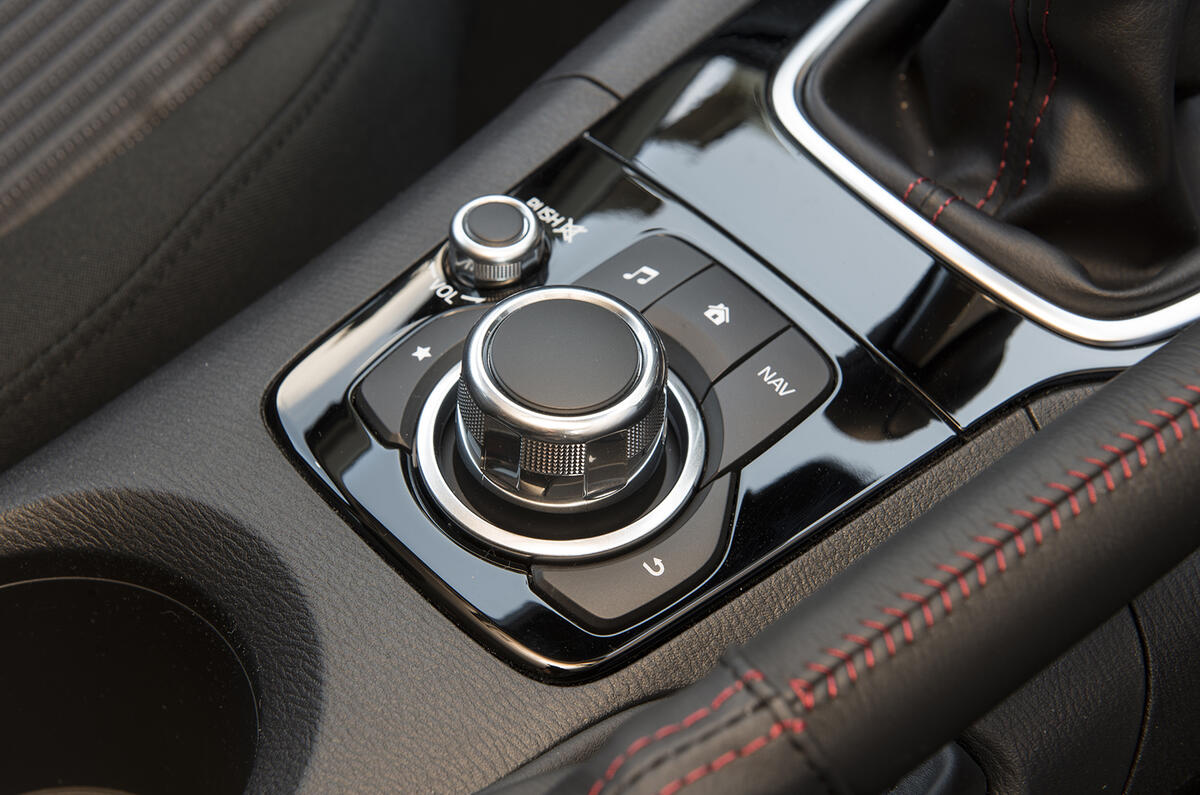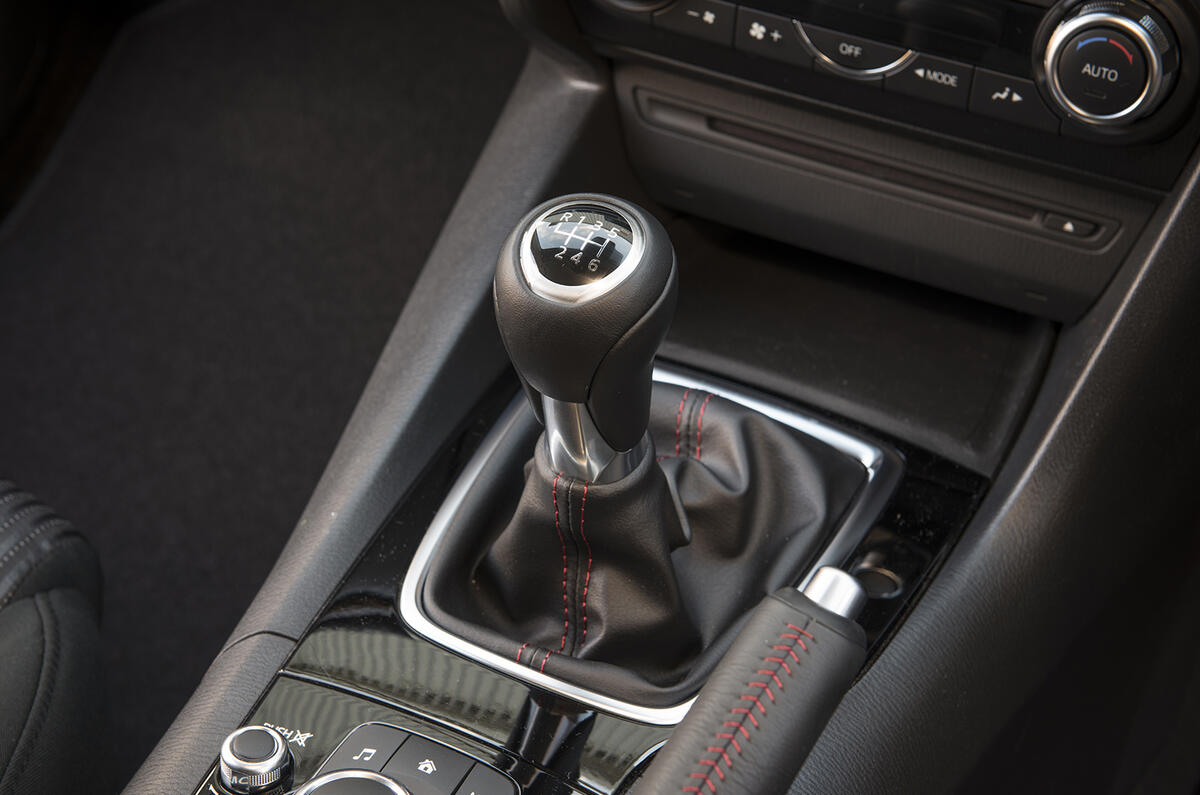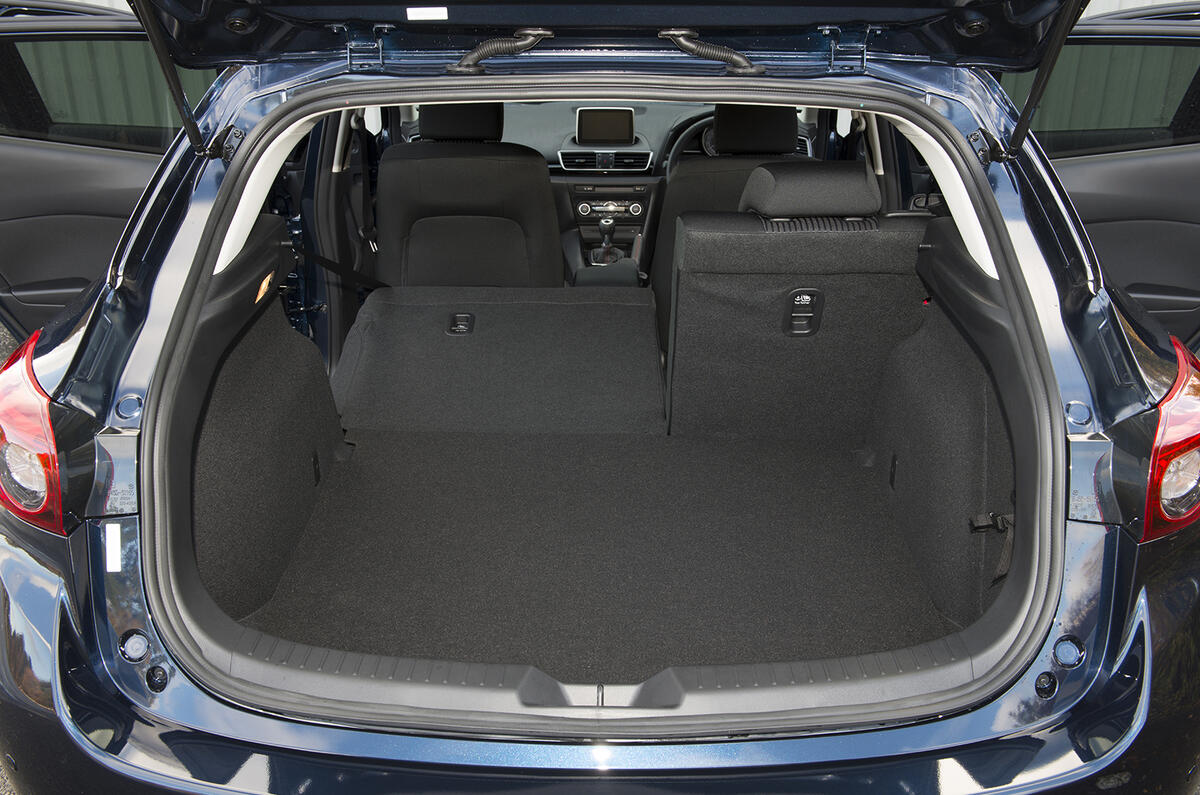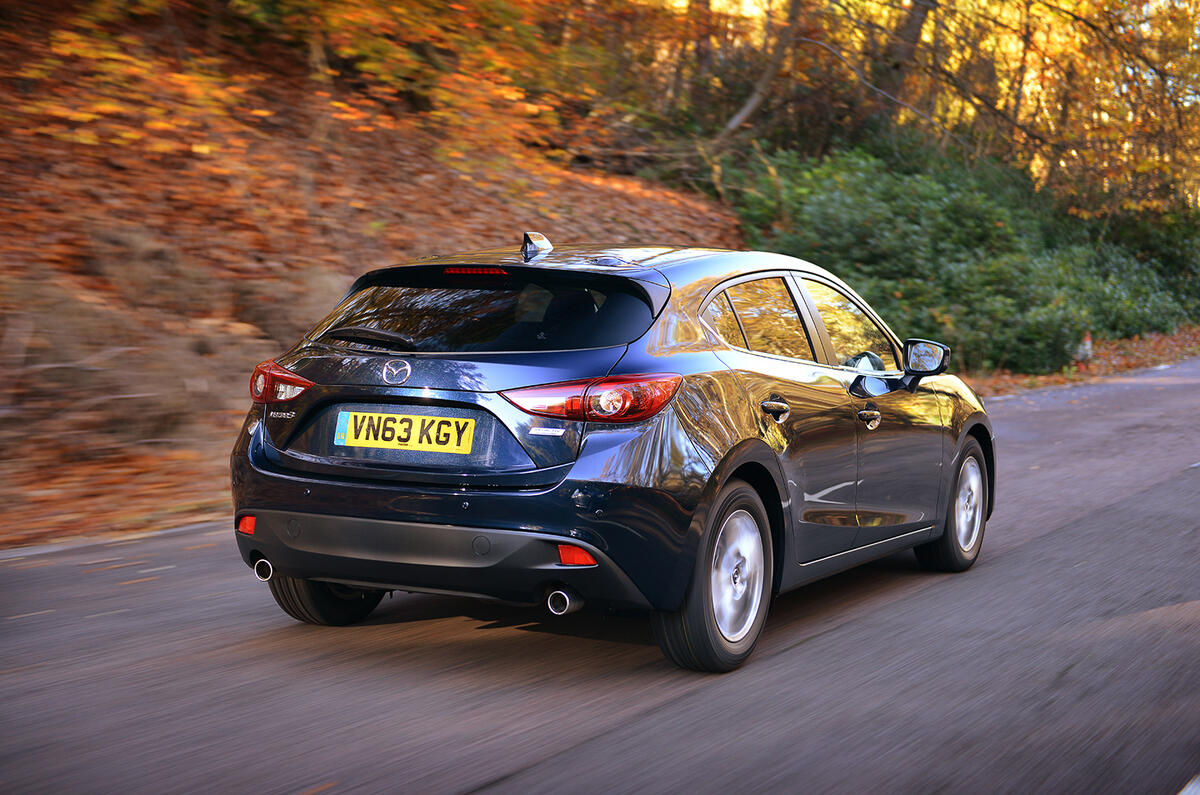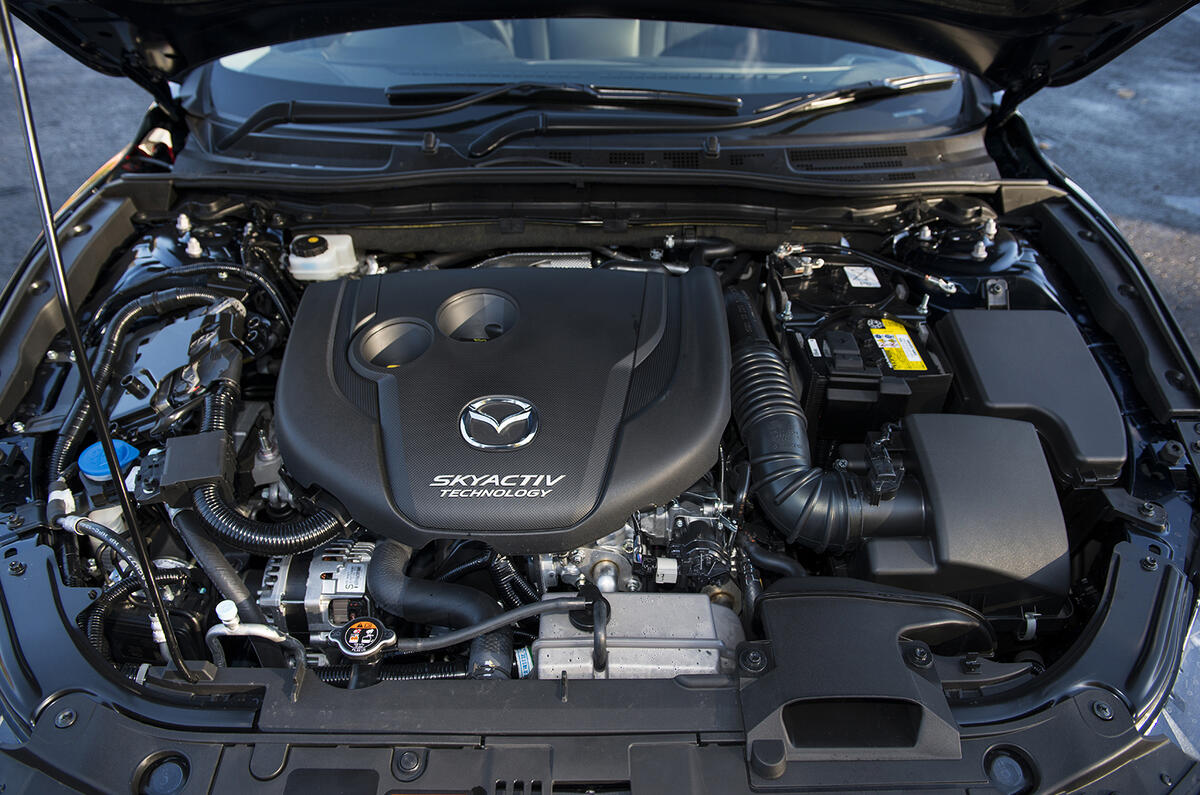This car is meaningfully no larger than the old Mazda 3 – which will come as a surprise to no one – but rarely has there been such a stark contrast in design between an outgoing model and its successor.
Flowing curves, sculpted surfaces and shrink-wrapped body volumes replace the bluff and ungainly looks of old. Even the 2017 facelift has done very little to disturb the 3's handsome, if divisive, looks. The updates to the exterior include a new front grille and the integration of LED headlights, something which is available on all its closest rivals. Underneath the bodywork, the Mazda 3 gains G-Vectoring Control system, which is found on the bigger Mazda 6, and the engine range has been tweaked to produce lower emissions.
Our testers all agreed that a marked improvement has been made in styling terms, turning the 3 into one of the hatchback class’s more handsome representatives.
The car is also handsome regardless of which version you choose, for there are now two. The 3 hatchback is just 5mm longer than the previous one, and 40mm wider, but its roofline is 20mm lower than before, contributing to a relatively low drag coefficient of 0.275. Meanwhile, the car’s wheelbase has been stretched by 60mm, to 2700mm.
Those who’d rather not have another typical five-door hatch have the option of buying the ‘fastback’ instead. It has a 120mm longer rear overhang, a slightly larger but flatter boot under its tailgate and a silhouette much more akin to a four-door notchback than anything else. Prices for each body style are identical.



